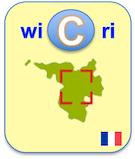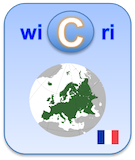| caused < causes < causing | Facettes : |
List of bibliographic references
Number of relevant bibliographic references: 46.[0-20] [0 - 20][0 - 46][20-40]
Pour manipuler ce document sous Unix (Dilib)
EXPLOR_STEP=$WICRI_ROOT/Wicri/Bois/explor/RenardV1/Data/Istex/Curation
HfdIndexSelect -h $EXPLOR_AREA/Data/Istex/Curation/AbsEn.i -k "causes"
HfdIndexSelect -h $EXPLOR_AREA/Data/Istex/Curation/AbsEn.i \
-Sk "causes" \
| HfdSelect -Kh $EXPLOR_AREA/Data/Istex/Curation/biblio.hfd
Pour mettre un lien sur cette page dans le réseau Wicri
{{Explor lien
|wiki= Wicri/Bois
|area= RenardV1
|flux= Istex
|étape= Curation
|type= indexItem
|index= AbsEn.i
|clé= causes
}}
|
| This area was generated with Dilib version V0.6.27. | |



